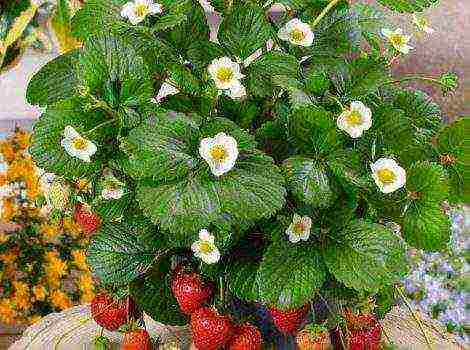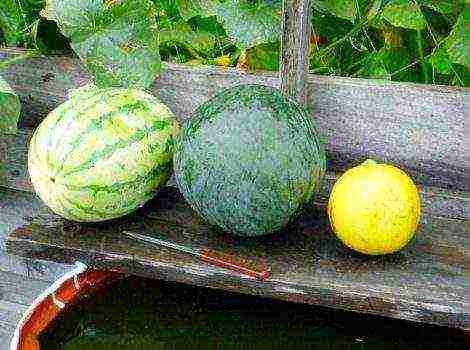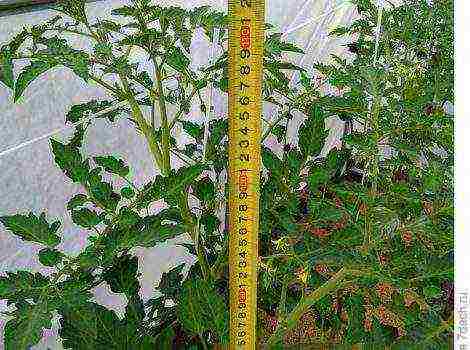Content
- 1 What is a trellis
- 2 Types of trellis for growing in the open field
- 3 Methods for planting cucumbers on a trellis
- 4 Features of the trellis method of growing cucumbers
- 5 Types of trellises for growing cucumbers in the open field
- 6 Methods for planting cucumbers on a trellis
- 7 Pros and cons of the tapestry method
- 8 Video: arranging a tapestry with your own hands from scrap materials
- 9 Video: Growing cucumbers on a trellis

Traditionally, cucumbers were grown and grown in the open field in the spread, but now gardeners are increasingly growing cucumbers on a trellis. After all, the yield obtained in this way turns out to be much higher.
What is a trellis
Trellis is a vertical structure for growing vegetables. These can be wooden or metal posts dug into the ground. A wire or mesh is pulled between them, and sometimes slats are attached.
Such a bed looks neat, it is convenient to harvest on it, since all vegetables are clearly visible.
However, not all types of cucumbers need a trellis. So, bush cucumbers, due to their compactness, grow well without trellises, but their yield, in comparison with woven cucumbers, is much lower. Therefore, if it is important for you to harvest a large harvest, then you will have to purchase or build a support for your cucumber vine.
Types of trellises for growing in the open field
If earlier vegetables were grown on a trellis mainly in a greenhouse, now they are increasingly used in the open field. Tapestries come in various shapes - in the form of a wall, rectangle, square, tent, circle. They are made from almost any material - wooden slats, beams, bicycle wheels, metal tubes, metal or plastic nets with different mesh sizes. Consider the most convenient and easy-to-manufacture designs:
- Tapestry in the form of a wall. To install such a structure, it is enough to drive in pillars on both sides of the garden bed, and pull the net between them. You can set 3-4 pillars along the bed and pull a net or wire over them, on which a rope or twine is attached.
Tapestry in the form of a wall - a design common due to its simplicity
- Round trellis. As a rule, it is constructed from bicycle wheels and a stick or metal tube. Wheels are strung on it from different sides through the hub and fixed with screws and washers twisted into the end of the stick. The ropes are tied to the spokes of the wheels or to the rim of the wheel. Then the structure is installed in a place suitable for cucumbers.
Bicycle wheel trellis - compact and convenient
- Sunflower and corn can also act as a support, which at the same time attracts beneficial insects, shelters from the sun. As a result, you have cucumbers, seeds or corn. To use this method, cucumbers are sown in two rows, and auxiliary crops are sown between them. The central row is sown earlier so that young shoots have time to grow up.
A corn support is an interesting solution that allows you to grow a good harvest of cucumbers
-
Trellis made of branches. To make it, you will need at least 20 branches with a diameter of 1 cm, the number of branches and their length depends on the desired size. Arrange the branches according to size, stick the first of them into the ground to a depth of 10–12 cm. Next, after about 15 cm, at an angle of 60 ° to the first, insert the next branch. Tie them together at the point of intersection with wire. Repeat these steps until you get the desired size of the trellis.When the support is ready, cut the ends of the branches so that you get a rectangular trellis.
Difficult to make, but very practical trellis made of branches will help you get an excellent harvest.
-
Tapestry in the form of a rectangle. First, a frame is made of bars, two of which are about 2 meters long, two equal to the length of the bed. Fasten the bars in a convenient way for you. You can fix them with metal corners or join them "in a thorn", and also when chamfering, it is easy to glue the bars along the edge.
Methods for joining bars used to make trellises
Whichever method you choose, you need to complete the fastening by tightening the screws. Then a mesh is attached to the frame. A square trellis is made in a similar way, only all the bars are taken of equal length.
Such a rectangular trellis not only helps to grow cucumbers, but also serves as a decoration of the site.
Methods for planting cucumbers on a trellis
You can grow tasty and healthy cucumbers in various ways. Let's consider the most convenient ones.
In the open field
Seeds or seedlings of cucumbers are planted in one or two rows. When planting in one row, the distance between rows should be 1.0–1.3 m, between plants in a row - about 25 cm. When planting in two rows, the distance between rows is 50–70 cm. The distance between plants in a row is 25– 30 cm. If you plant cucumbers too close to each other, they will interfere with each other's development, which means that the harvest will be weak.
A rail is attached above each row or a trellis wire is pulled at a height of about 2 m from the ground. The gap between the pillars is 1.5–2.0 m. Between the pillars under the upper wire or rail, 2 more wires are pulled (at a height of about 15 cm, 100 cm from the ground level), for which a mesh with 15–20 cm cells is attached. Instead of a net, a rope can be tied to the upper crossbar for each shoot, around which the stem is wrapped around as it grows.
In order for cucumbers to harvest faster, they are planted in seedlings. And if you decide to plant with seeds, then prepare a temporary film shelter for young shoots.
At 3-4 weeks of growth, when the length of the stem reaches 31-35 cm and 5-6 leaves have formed, you can start the garter. It is more convenient to tie up young shoots of cucumbers, because they are more elastic than the stems of a mature cucumber. The trellis is installed before disembarking the seedlings. You need to tie the plants under the first leaves not tightly, but freely, without interfering with their development and growth.
The next stage is pinching, that is, removing the top of the main stem (the carrier of male flowers that produces barren flowers) over 5-6 leaves, in order to activate the growth of lateral shoots, on which female flowers will appear, from which fruits are formed. Thanks to this procedure, the yield will be high, the cucumbers will not taste bitter. Pinching is done both in greenhouse cucumbers and in plants in the open field.
When growing cucumbers on a cellular support, do not break off the antennae, with them the plant clings to the cells. To prevent the main stem from falling, pass it 3-4 times through the cells.
During cold snaps, throw a non-woven covering material over the trellis. Try to install the supports so that they are closed from the wind, because of the swaying in the wind, the yield can be significantly reduced. Place it next to your house or shed.
It is easy to distinguish a male flower from a female one: the female has an ovary in the form of a small cucumber, and the male grows on a leg
In the greenhouse
Planting cucumbers on a trellis in a greenhouse follows the same scheme as in open ground, only the distance between rows is 50-60 cm, between plants in a row is about 40 cm.
Table: advantages and disadvantages of growing cucumbers on a trellis and in spread
Video: vertical cultivation of cucumbers in a greenhouse
Growing cucumbers on a trellis can significantly save time and garden area. and also to reap a high yield.
Gardeners practice 2 ways of growing cucumbers - vertical and spread.When grown on a trellis, cucumbers begin to bloom and bear fruit earlier than with the traditional method of growing on the ground. Varieties and hybrids for vertical formyronaya are selected taking into account the complex resistance to diseases and pests.
Features of the trellis method of growing cucumbers
Cucumber culture grows well on slightly acidic or neutral soils, in an area protected from the wind and well warmed up by the sun. To get a large yield with the trellis method of growing cucumbers, it is necessary to take into account the physiological characteristics of the plant:
- Site selection: the best predecessors for cucumber are potatoes, tomatoes, peas, cabbage.
- To protect the site from the winds, a rocker planting of beans, corn, sunflower is carried out.
- Soil preparation - the cultivated layer should be at least 20 cm. After installing the trellis into the ground, humus is covered (10-15 kg / m2).
- To ensure an increase in the temperature of the surface soil layer by 1–2 ° C, ridges or a widened one-sided ridge with a height of 20–30 cm are formed. The width of the ridges is 0.9–1 m, the width of the ridges is 0.6–0.7 m.
- It is recommended to use black plastic wrap as mulch on the beds. Mulch inhibits the growth of weeds and retains winter moisture. When installing a drip irrigation system, the irrigation hoses are laid out with the holes upwards under the film or placed on the soil surface along the edge of the film.
In autumn, manure or humus is introduced into the soil, loosening material (sawdust, straw, peat, last year's foliage) - 8-10 kg / m2. Simultaneously add simple superphosphate - 30-40 g / m2, potassium salt - 15-20 g / m2, if necessary, ash or lime and dug to a depth of 25-30 cm. Acceptable soil density for cucumbers - 0.4-0.6 g / cm3. If this figure is higher, the roots may come out on the surface of the ridge or slope.
In the spring, ammonium nitrate - 25–30 g / m2, potassium sulfate - 10–15 g / m2 are introduced into the soil, dug to a depth of 15–20 cm. The surface of ridges or ridges is harrowed and leveled with a rake. The seed furrows are moistened.
Growing cucumbers on a trellis in two lines allows you to harvest more crops from a smaller area
Direct sowing in the ground:
- seeds are heated for 3-4 hours at t + 50 + 60 ° C;
- incubated for half an hour in a weak solution of potassium permanganate (1 g per 100 ml of water) or in a pulp of garlic;
- on fertile soils, 3-4 seeds are planted per running meter, on poor soils - 4-5 seeds.
The seedling growing method allows you to get fresh produce 2 weeks earlier. Recommended varieties and hybrids for vertical cultivation:
- Relay class hybrids;
- parthenocarpic hybrids with a green leaf length up to 20 cm: Mill F1, Makar F1, Marta F1;
- fast-growing hybrids Emelya F1, Mazay F1, Real Colonel F1;
- beam gherkins Anyuta F1, Maryina Roshcha F1, Chistye Prudy F1, Three tankmen F1.
Types of trellises for growing cucumbers in the open field
For trellis cultivation, structures of strong twines are used, stretched in 2-3 rows or placed in the form of a hut. The plastic trellis net for supporting plants with 15x17 cm cells, 5-10 m long and 2 m wide is very popular. The net is pulled over arcs or attached to the greenhouse wall.
To arrange trellises, posts are installed at a distance of 1.5–2 m from each other and 2 or 3 rows of wire are pulled between them:
- 1 row 10-15 cm on the ground surface;
- 2nd row - 1-1.3 m;
- 3 row - 2-2.2 m.
A metal or synthetic mesh with 10x15 cm cells is attached to the wire, or a strong twine is tied to the upper level with a double sliding knot. With the second end of the twine, a seedling is grabbed at a height of 10 cm above the ground. While developing, the lash twines around the string and rises up.
The support consists of reinforced metal pipes or a corner and intermediate wooden posts 30 cm in diameter.
Photo gallery: various designs of trellises for vertical cultivation of cucumbers
Arrangement of the drip irrigation system allows to increase the yield by 30%.
Drip irrigation system saves water, energy and time of the gardener
Methods for planting cucumbers on a trellis
The peculiarities of the variety or hybrid determine which planting scheme to choose in the open field - in 1 or 2 lines.
Table: schemes for growing cucumbers
Before the appearance of the mustache, the seedlings are grown under temporary shelter - they place a frame made of arches covered with a film under the trellises, or protect the entire structure with spunbond.
Cucumber lashes are formed - the seedling is tied up with a free loop under the first real leaf. A peg is stuck next to the plant and the free end of the twine is tied to it. The shoot is wrapped with a rope, covering each internode. For better rooting of seedlings, 4 lower nodes are blinded - at the beginning of growth, the buds of female flowers and the rudiments of lateral shoots are plucked from the axils of the leaves.
Further pinching:
- remove the lateral shoot above the first leaf at a distance of up to 1.6 m;
- above the second sheet - on the lash section from 1.6 to 2 m.
When the plant reaches the top of the trellis, the main stem is thrown over the top wire, guided along the row and down. The formation of a plant is carried out within a month after their planting in a permanent place.
Ripe greens are harvested every day, trying not to overgrow. Timely collection of fruits increases productivity, since overgrown fruits inhibit the formation of new ovaries.
Pros and cons of the tapestry method
Growing cucumbers on a trellis has its advantages:
- plants are evenly illuminated by the sun;
- you can effectively use a small piece of land;
- when watering and fertilizing, moisture does not linger on the leaves, so the plants do not get sunburn;
- easier care and harvesting work;
- when collecting fruits, the whips are not damaged.
With the trellis method of cultivation, it should be borne in mind that vertical plants require more fertilizers - the need for phosphorus increases by 20-30%. And they are also subject to the drying effect of wind and sun, therefore they need additional watering.
Video: arranging a tapestry with your own hands from scrap materials
Growing cucumbers on a trellis enables the plant to absorb solar energy more efficiently. Additional light radiation accelerates the development of the cucumber - stems and leaves grow faster, flowers and fruits develop. The intensity of the light affects the yield, which depends on the ratio of male to female flowers. In bee-pollinated varieties, with insufficient illumination, more male flowers are formed, with a high one, the number of female flowers on which the fruit ovary is formed increases.
Video: Growing cucumbers on a trellis


